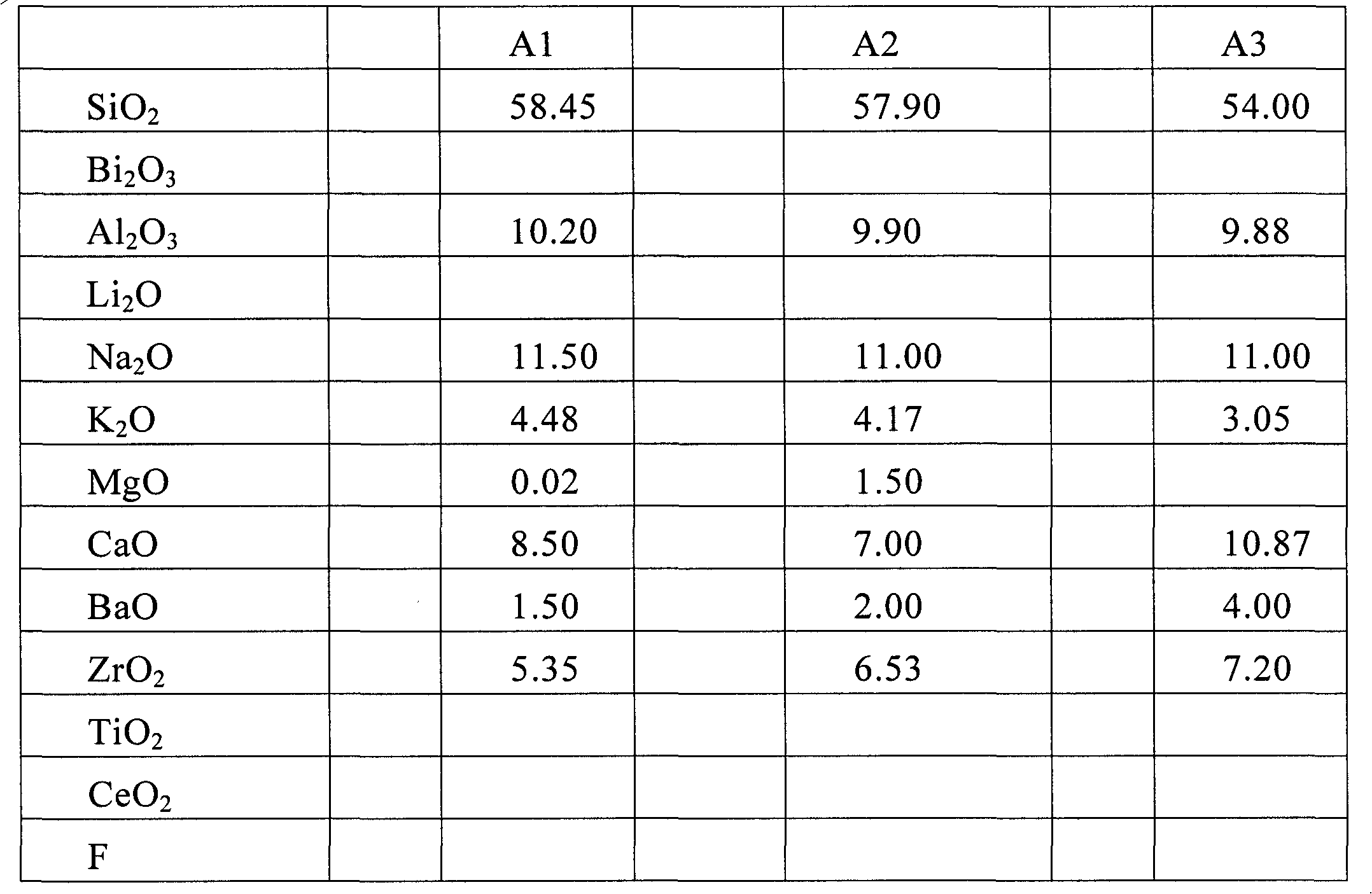Aluminosilicate glass having high thermal stability and low processing temperature
A technology of aluminosilicate glass and processing temperature, applied in the field of aluminosilicate glass, can solve problems such as insufficient anti-devitrification performance, loss of glass characteristics, and influence on glass forming.
- Summary
- Abstract
- Description
- Claims
- Application Information
AI Technical Summary
Problems solved by technology
Method used
Image
Examples
Embodiment Construction
[0163] A glass composition according to the invention is selected and a glass is produced therefrom. For the melting, a 4 liter platinum pot was used, in which the raw material was placed at a melting temperature of 1580° C. for more than 8 hours and kept there at this temperature for 14 hours. The glass melt was then cooled to 1400° C. within 8 hours with stirring and then poured into a graphite mold preheated to 500° C. After pouring, the casting mold was placed in a cooling furnace preheated to 650° C., which was cooled to room temperature at 5° C. / hour.
[0164] The compositions and properties of the glasses according to the invention are summarized in Tables 1 and 2 below.
[0165] Table 1
[0166]
[0167]
[0168] Table 2
[0169]
[0170]
[0171]
[0172] Anti-crystallization:
[0173] + good
[0174] O Moderate
[0175] - Difference
[0176] It is thus described for the first time by the present invention to provide an alternative glass compo...
PUM
| Property | Measurement | Unit |
|---|---|---|
| glass transition temperature | aaaaa | aaaaa |
| glass transition temperature | aaaaa | aaaaa |
| glass transition temperature | aaaaa | aaaaa |
Abstract
Description
Claims
Application Information
 Login to View More
Login to View More - R&D
- Intellectual Property
- Life Sciences
- Materials
- Tech Scout
- Unparalleled Data Quality
- Higher Quality Content
- 60% Fewer Hallucinations
Browse by: Latest US Patents, China's latest patents, Technical Efficacy Thesaurus, Application Domain, Technology Topic, Popular Technical Reports.
© 2025 PatSnap. All rights reserved.Legal|Privacy policy|Modern Slavery Act Transparency Statement|Sitemap|About US| Contact US: help@patsnap.com



